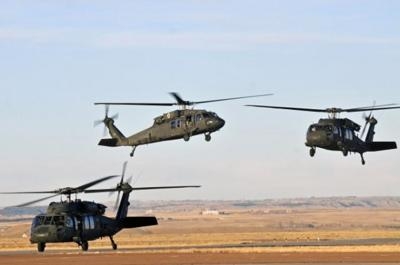Mon, Jul 22, 2013
Looks Ahead To All-Composite Construction Of Army Aircraft
In the future, Army aircraft may be made of all composite materials, and the Prototype Integration Facility Advanced Composites Laboratory is ready. Part of the Aviation and Missile Research Development and Engineering Center's, or AMRDEC's, Engineering Directorate, the Prototype Integration Facility's, PIF's, Advanced Composites Lab has successfully designed and made repairs on damaged composite aircraft components for several years now.

From research and development to implementation and rapid prototyping, advancing composites technology is one of AMRDEC's core competencies that enable the current and future force. The PIF Advanced Composites Lab is one of several teams at the AMRDEC working with composites. "We have gotten as strong and as light as we can get with metals, and we're at the end of what metals can economically do," PIF Advanced Composites Lab lead Kimberly Cockrell said. "The only way to get stronger and lighter and more capable for the fight is to go to composites."
PIF leadership recognized a need for advanced composites repair and began developing a composites capability within the PIF mission to provide rapid response solutions to the warfighter. The program includes repair design and engineering substantiation to show that repaired components are returned to original strength.
Personnel in the PIF Advanced Composites Lab designed and developed repairs for damaged composite stabilators on the UH-60M Black Hawk helicopter and the AH-64E Apache helicopter. Prior to their repair method, the only way to repair an aircraft with a damaged stabilator was to pull off the broken stabilator and replace it with a new one. Cockrell said the "pull-and-replace" approach was costing the Army up to six figures per stabilator replacement. While the first repair procedures were designed for Black Hawk stabilators, the repair method applies to any solid laminate or sandwich core composite structure, so the procedures and training can be leveraged to other Army aircraft.

Cockrell is proud of the lab's achievements. Its repair procedures are the first approved repair for primary composite structure on Army aircraft. The lab is currently working repairs for blades too, as well as just-in-time tooling for parts with complex curves or topography.
And in addition to repair solutions, the lab is using composite materials to create solutions for other issues. For example, it has designed and built a composite doubler to strengthen the hat channels that extend from the hinges of the UH-60 engine cowling. "When the aircraft is on the ground being maintained, the engine cowling folds out to become a maintenance stand," Cockrell explained. "Two Soldiers can stand up there with a tool box and work on the engine. Unfortunately, minor damage to those hat channels can cause these (cowlings) to catastrophically fail and seriously injure the Soldiers. We designed this piece so that -- if the hat channel shows any kind of damage whatsoever -- you can simply install this doubler over the damaged area; it will restore the cowling to its original strength or better, and two doublers -- one on each side of the cowling -- adds less than a pound to the overall aircraft weight," Cockrell continued. "So the pound that you add is well-worth the safety margin you
gain."
It's concepts like that, Cockrell said, that the lab is introducing to program managers to show how the lab can help with more than just repairing stabilators. "In five to 10 years, it's all composite," he said. "So whether it's fiberglass or carbon fiber or Kevlar or a hybrid, it's going all composite quickly. And it's important for the Army to be ready."
More News
Inversion to Launch Reentry Vehicle Demonstrator Aboard SpaceX Falcon 9 This fall, the aerospace startup Inversion is set to launch its Ray reentry demonstrator capsule aboard Spac>[...]
"We are excited to accelerate the adoption of electric aviation technology and further our journey towards a sustainable future. The agreement with magniX underscores our commitmen>[...]
"The journey to this achievement started nearly a decade ago when a freshly commissioned Gentry, driven by a fascination with new technologies and a desire to contribute significan>[...]
Aero Linx: OX5 Aviation Pioneers Each year a national reunion of OX5 Aviation Pioneers is hosted by one of the Wings in the organization. The reunions attract much attention as man>[...]
"Our driven and innovative team of military and civilian Airmen delivers combat power daily, ensuring our nation is ready today and tomorrow." Source: General Duke Richardson, AFMC>[...]
 SpaceX to Launch Inversion RAY Reentry Vehicle in Fall
SpaceX to Launch Inversion RAY Reentry Vehicle in Fall Aero-News: Quote of the Day (04.23.24)
Aero-News: Quote of the Day (04.23.24) Aero-News: Quote of the Day (04.20.24)
Aero-News: Quote of the Day (04.20.24) ANN's Daily Aero-Linx (04.20.24)
ANN's Daily Aero-Linx (04.20.24) Aero-News: Quote of the Day (04.21.24)
Aero-News: Quote of the Day (04.21.24)




